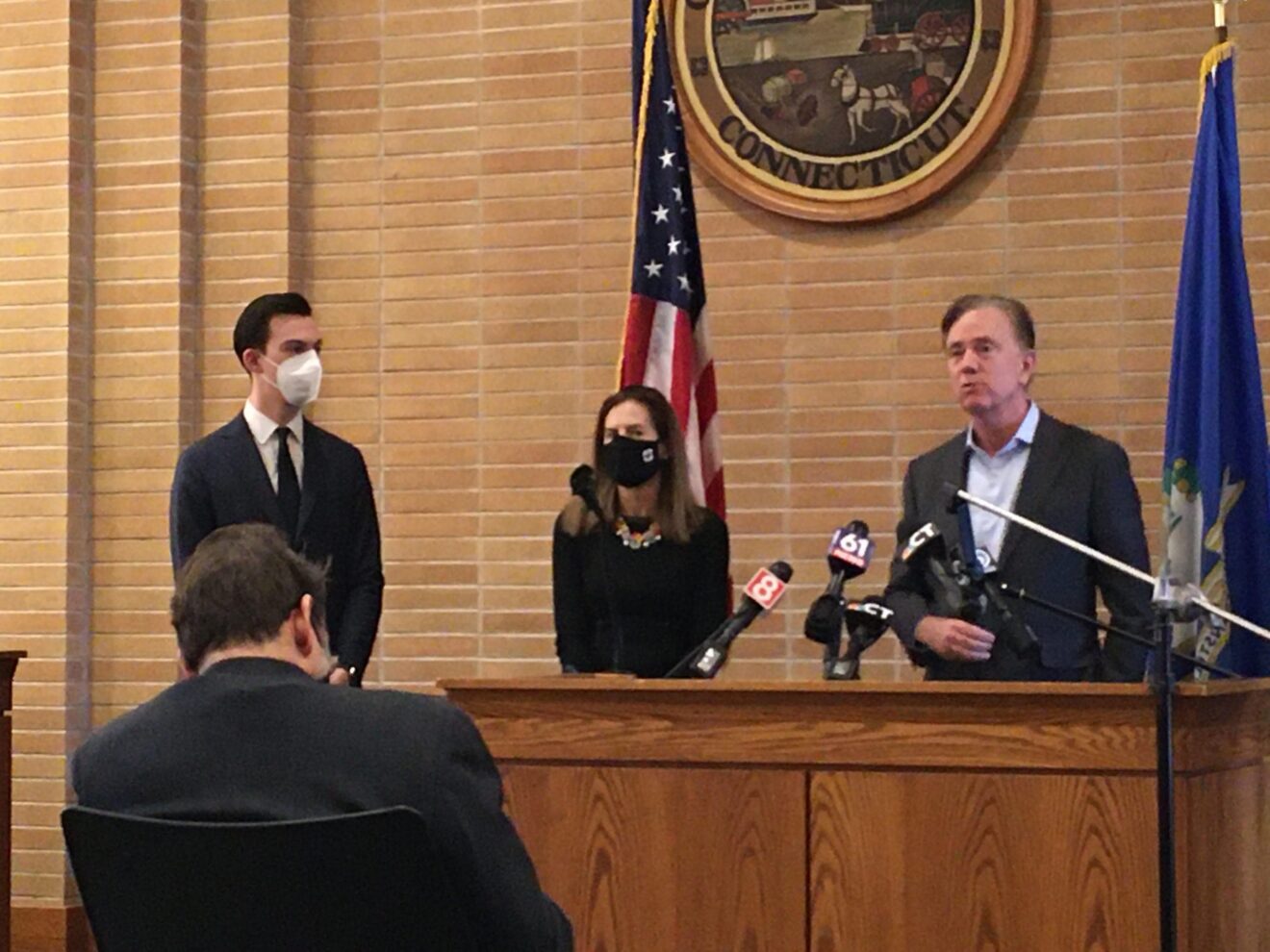MIDDLETOWN — City Hall and Russell Library will provide free, public WiFi networks as part of a statewide initiative to bring reliable internet access to underserved communities, Gov. Ned Lamont announced Tuesday morning.
In a press conference in Middletown, Lamont said that these locations will be the first of 200 community sites across Connecticut, spread across 169 towns. A combination of state and federal dollars will fund the initiative, and the Middletown networks are expected to be up and running by the end of the week. State officials did not share a timeline for the statewide rollout.
“This is something more than just making WiFi available free of charge to everybody,” Lamont said. “It’s really a statement about where the state is going.”
Lamont was joined by other state and local leaders, including Lt. Gov. Susan Bysiewicz, who said that in 2018, a statewide survey found that nearly a quarter of Connecticut results lack internet access, and that Black and Hispanic households were disproportionately represented in that group. Bysiewicz said this initiative will be “incredibly important” to close that digital divide.
“For the past year, we’ve been living in the digital world as students and employees have had to learn and work remotely,” Bysiewicz said. “For many of us, access to the internet has been a critical lifeline, something we need to get access to food, to COVID testing, to sign up for the vaccine, to work while outside of the office or to do our homework.”
Michael Conner, superintendent of Middletown Public Schools, echoed the lieutenant governor’s call to close the divide between internet haves and have-nots, saying the “core work of educators is to close equity gaps.”
Mayor Ben Florsheim said he was excited for Middletown to pilot this program, and that he anticipated it would help revitalize the town’s economy in the aftermath of the pandemic.
“We want to make sure we are building back downtown and our whole community in a way that allows it to be sustainable, to be better than it was before,” Florsheim said. “There is so much eagerness for people to get back out and start experiencing the world again, and we want to be ready for that when it happens. To do that, we need to make sure we have the best public infrastructure possible.”

